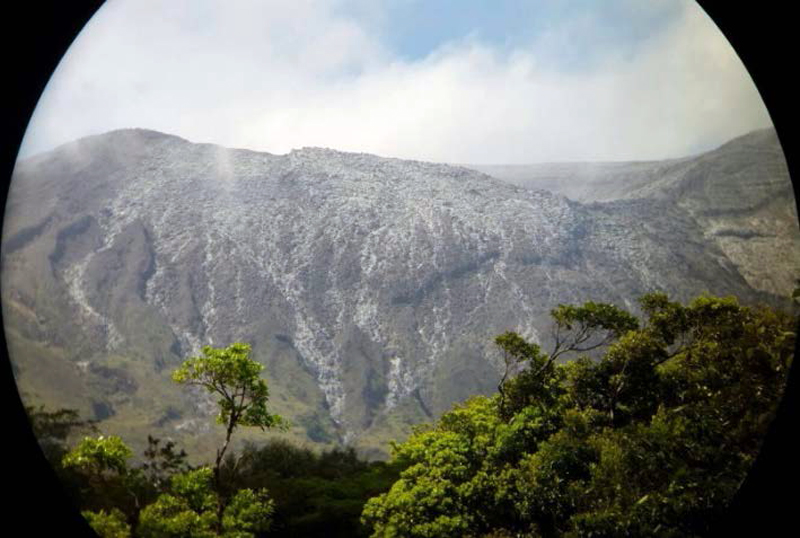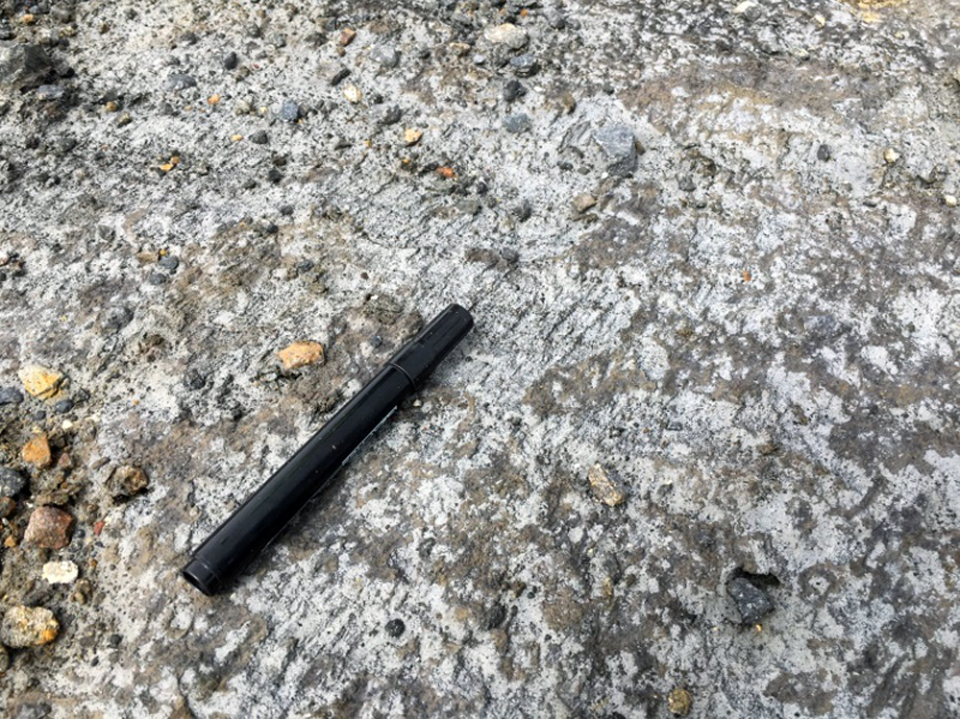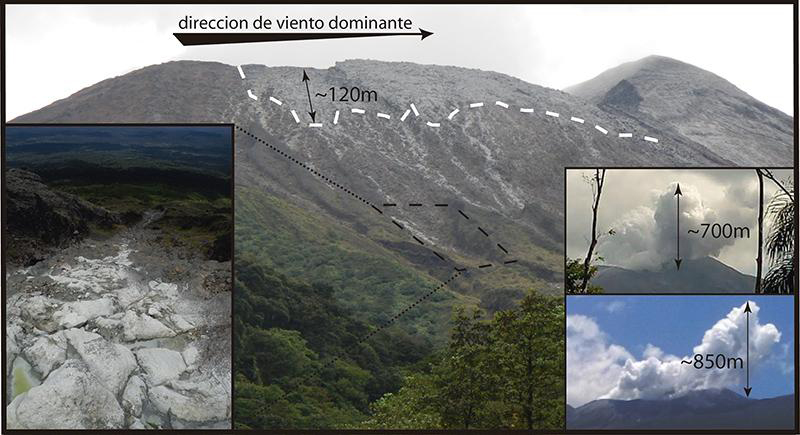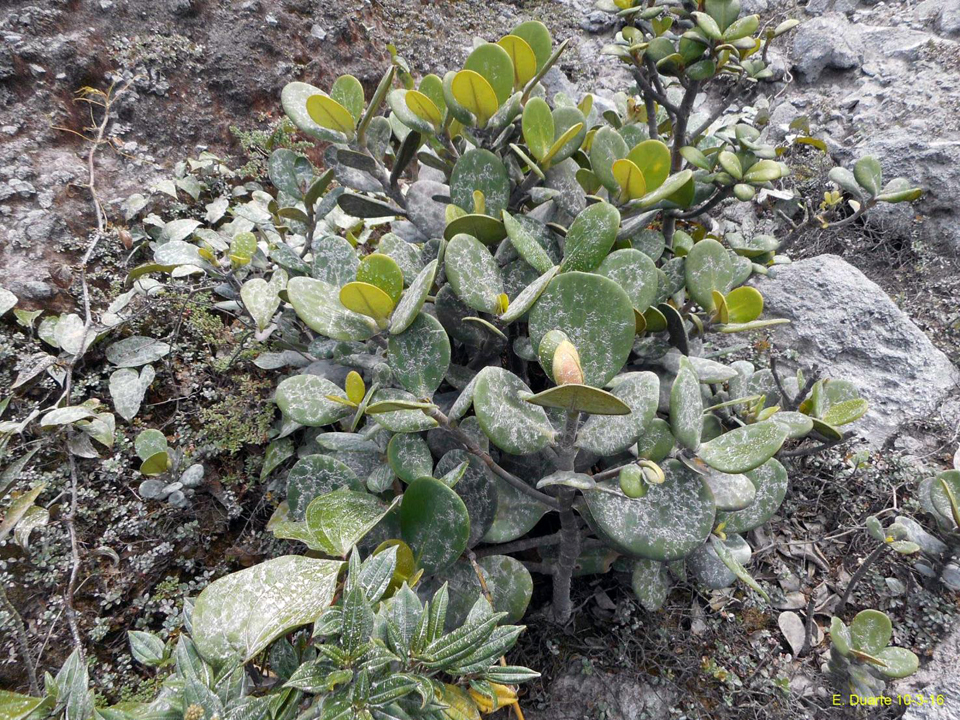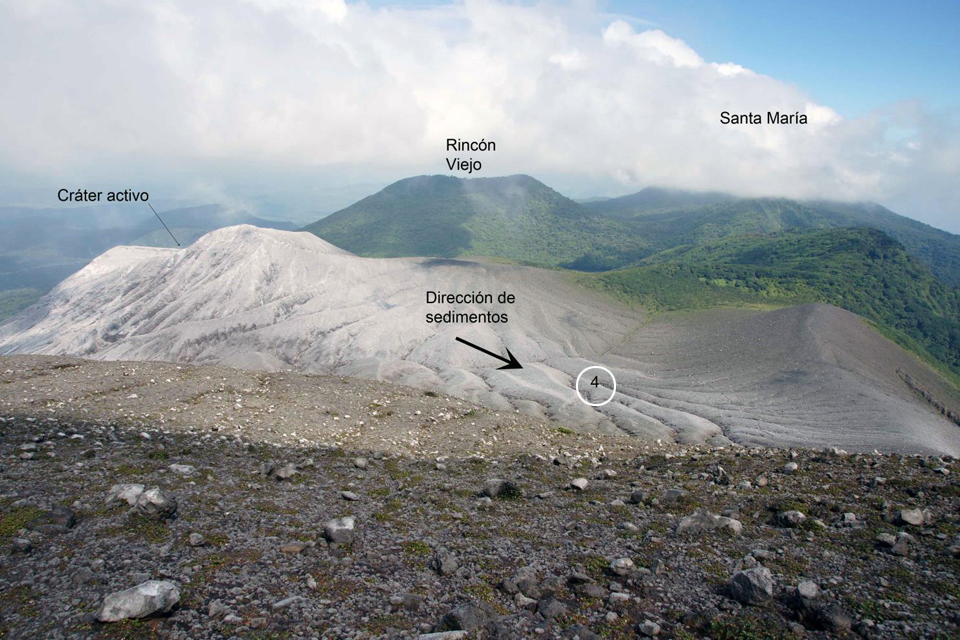Report on Rincon de la Vieja (Costa Rica) — August 2017
Bulletin of the Global Volcanism Network, vol. 42, no. 8 (August 2017)
Managing Editor: Edward Venzke.
Edited by A. Elizabeth Crafford.
Rincon de la Vieja (Costa Rica) Phreatic explosions disperse material up to 2 km from the active crater in March 2016 and June 2017
Please cite this report as:
Global Volcanism Program, 2017. Report on Rincon de la Vieja (Costa Rica) (Crafford, A.E., and Venzke, E., eds.). Bulletin of the Global Volcanism Network, 42:8. Smithsonian Institution. https://doi.org/10.5479/si.GVP.BGVN201708-345020
Rincon de la Vieja
Costa Rica
10.83°N, 85.324°W; summit elev. 1916 m
All times are local (unless otherwise noted)
The active crater at Costa Rica's Rincón de la Vieja, which contains a 500-m-wide acid lake, has been the site of numerous historic eruptions at this large volcanic complex. Intermittent phreatic explosions since 2011 have dispersed volcanic debris from the crater lake within a few kilometers of the crater rim and into the surrounding streams a number of times. The most recent previous activity included explosions in September and October 2014, and phreatic eruptions on June, August and October 2015 (BGVN 41:01); this report discusses activity during 2016 and through July 2017. Information comes from the Observatorio Vulcanológico Sismológica de Costa Rica-Universidad Nacional (OVSICORI-UNA) and the Observatorio Sismológico y Vulcanológico de Arenal-Miravalles (OSIVAM-ICE). The OVISAM-ICE reports are published through the Red Sismológica Nacional (RSN), the National Seismological Network. Ejected material is described in the original reports in various ways that appear to be interchangeable rather than signifying actual content differences, so those distinctions are not reflected below unless ash was specified.
The first evidence of a new episode of phreatic explosions was noted during a site visit on 15 February 2016. Numerous explosions during March spread material as far as 2 km from the crater rim. After an explosion on 1 May 2016 there were no further reports until 23 May 2017, when a series of intermittent explosions again ejected material onto the N and NW flanks and sent plumes of steam-and-gas as high as 2 km above the crater rim. The last reported explosion was on 5 July 2017.
Activity decreased at the end of 2015 after the phreatic explosions of 16-21 October. The number of seismic events increased again during February and March 2016. OVSICORI-UNA scientists observed the first evidence of a new episode of phreatic explosions during a field visit on 15 February 2016 when they noted deposits about 20 m from the crater rim. By the end of March, the RSN had reported 25 explosions. Three of the largest explosions occurred on 9 February, 9 March, and 18 March. They were characterized by episodes of tremor in pulses that usually lasted about five minutes prior to the phreatic explosion, and then changed to continuous tremor for several hours afterwards.
OSIVAM-ICE scientists reported photographic evidence of deposits from a 2 March explosion that covered a wide area on the N flank of the active crater (figure 22). They visited on 3 March 2016 and noted fresh deposits from the phreatic explosions about 200 m W of the crater rim (figure 23). They also witnessed three explosions during the afternoon, the longest lasting for 65 seconds.
Scientists from OVSICORI-UNA conducted additional site visits during 8 and 10-11 March 2016. On 8 March fresh ash was found about 120 m from the crater rim (figure 24), and a temperature of 55°C was measured remotely for the convection cell in the lake. Based on photographs taken by nearby residents, OVSICORI-UNA scientists estimated that the ash and steam plumes produced by the 9 and 10 March explosions rose 700 and 850 m, respectively, above the crater. Local residents reported to The Tico Times that ash fell on the roofs of their homes within an area up to 6 km around the volcano after the explosion on 9 March, mostly in communities N of the crater (Upala and Buenos Aires).
The character of the deposits changed between February and March 2016, according to a report by OVSICORI scientists. The samples collected in February were rich in elemental sulfur, abundant in the crater lake and in the near-surface sediments. Studies of the March samples showed the presence of clasts of altered rocks, hydrothermal minerals, and elemental sulfur as well as 3-10% fresh glass.
During their summit visit on 10 and 11 March 2016, OVSICORI scientists noted a coating of white sediment, up to 5 mm thick in some places, covering the ground and the vegetation in a 400m-wide area to the SSW of the active crater (figure 25). Deposits extended as far as 2 km away, and coated the flanks of both the active crater and the nearby Von Seeback crater (figure 26).
A 15 March explosion generated a 700-m-high plume of water vapor and gas, according to an announcement from OVSICORI-UNA. They also reported an explosion on 1 May 2016 detected for 11 minutes by the seismic network. No further reports were made until May 2017.
A small lahar traveled down the N flank of the crater after an explosion on 23 May 2017. Explosions on 11 and 12 June were recorded seismically, but cloudy weather obscured visual observations. The Washington VAAC, however, noted a hotspot in the infrared satellite data on 11 June 2017 about 30 minutes before the explosion was reported. A diffuse steam plume was observed from Dos Rios de Upala rising about 50 m above the summit on 15 June, and a small phreatic explosion was recorded on 18 June 2017. A larger explosion on 23 June sent a plume 1-2 km above the summit, and ejected material to the W and NW onto the upper N flank toward the Von Seebach crater 2 km to the W. Small phreatic explosions on 5 July ejected material that did not rise above the crater rim.
Geological Summary. Rincón de la Vieja, the largest volcano in NW Costa Rica, is a remote volcanic complex in the Guanacaste Range. The volcano consists of an elongated, arcuate NW-SE-trending ridge constructed within the 15-km-wide early Pleistocene Guachipelín caldera, whose rim is exposed on the south side. Sometimes known as the "Colossus of Guanacaste," it has an estimated volume of 130 km3 and contains at least nine major eruptive centers. Activity has migrated to the SE, where the youngest-looking craters are located. The twin cone of Santa María volcano, the highest peak of the complex, is located at the eastern end of a smaller, 5-km-wide caldera and has a 500-m-wide crater. A Plinian eruption producing the 0.25 km3 Río Blanca tephra about 3,500 years ago was the last major magmatic eruption. All subsequent eruptions, including numerous historical eruptions possibly dating back to the 16th century, have been from the prominent active crater containing a 500-m-wide acid lake located ENE of Von Seebach crater.
Information Contacts: Observatorio Vulcanológico Sismológica de Costa Rica-Universidad Nacional (OVSICORI-UNA), Apartado 86-3000, Heredia, Costa Rica (URL: http://www.ovsicori.una.ac.cr/); Observatorio Sismológico y Vulcanológico Arenal-Miravalles del Instituto Costarricense de Electricidad (OSIVAM-ICE), Sección de Sismología, Vulcanología y Exploración Geofísica, Escuela Centroamericana de Geología, Apdo. 214-2060, San Pedro, Costa Rica (URL: http://rsn.ucr.ac.cr/); The Tico Times (URL: http://www.ticotimes.net/2016/03/10/costa-rica-rincon-de-la-vieja-volcano-vapor-ash-explosions).


